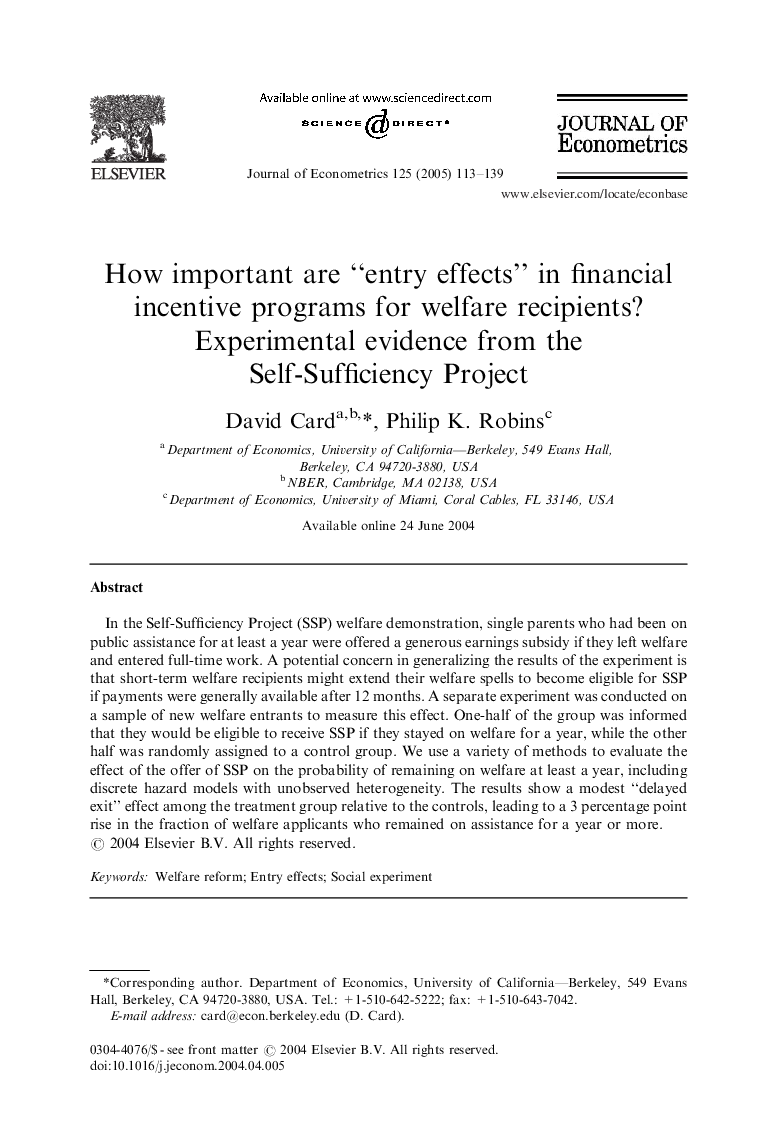| Article ID | Journal | Published Year | Pages | File Type |
|---|---|---|---|---|
| 9555351 | Journal of Econometrics | 2005 | 27 Pages |
Abstract
In the Self-Sufficiency Project (SSP) welfare demonstration, single parents who had been on public assistance for at least a year were offered a generous earnings subsidy if they left welfare and entered full-time work. A potential concern in generalizing the results of the experiment is that short-term welfare recipients might extend their welfare spells to become eligible for SSP if payments were generally available after 12 months. A separate experiment was conducted on a sample of new welfare entrants to measure this effect. One-half of the group was informed that they would be eligible to receive SSP if they stayed on welfare for a year, while the other half was randomly assigned to a control group. We use a variety of methods to evaluate the effect of the offer of SSP on the probability of remaining on welfare at least a year, including discrete hazard models with unobserved heterogeneity. The results show a modest “delayed exit” effect among the treatment group relative to the controls, leading to a 3 percentage point rise in the fraction of welfare applicants who remained on assistance for a year or more.
Keywords
Related Topics
Physical Sciences and Engineering
Mathematics
Statistics and Probability
Authors
David Card, Philip K. Robins,
